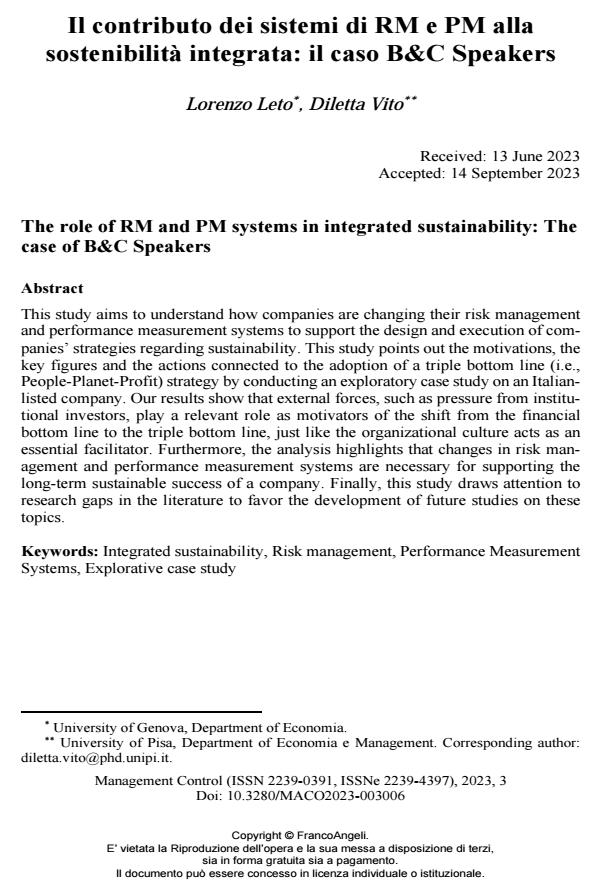Il contributo dei sistemi di RM e PM alla sostenibilità integrata: il caso B&C Speakers
Titolo Rivista MANAGEMENT CONTROL
Autori/Curatori Lorenzo Leto, Diletta Vito
Anno di pubblicazione 2024 Fascicolo 2023/3
Lingua Italiano Numero pagine 27 P. 113-139 Dimensione file 301 KB
DOI 10.3280/MACO2023-003006
Il DOI è il codice a barre della proprietà intellettuale: per saperne di più
clicca qui
Qui sotto puoi vedere in anteprima la prima pagina di questo articolo.
Se questo articolo ti interessa, lo puoi acquistare (e scaricare in formato pdf) seguendo le facili indicazioni per acquistare il download credit. Acquista Download Credits per scaricare questo Articolo in formato PDF

FrancoAngeli è membro della Publishers International Linking Association, Inc (PILA)associazione indipendente e non profit per facilitare (attraverso i servizi tecnologici implementati da CrossRef.org) l’accesso degli studiosi ai contenuti digitali nelle pubblicazioni professionali e scientifiche
This study aims to understand how companies are changing their risk management and performance measurement systems to support the design and execution of companies’ strategies regarding sustainability. This study points out the motiva-tions, the key figures and the actions connected to the adoption of a triple bottom line (i.e., People-Planet-Profit) strategy by conducting an exploratory case study on an Italian-listed company. Our results show that external forces, such as pres-sure from institutional investors, play a relevant role as motivators of the shift from the financial bottom line to the triple bottom line, just like the organizational cul-ture acts as an essential facilitator. Furthermore, the analysis highlights that changes in risk management and performance measurement systems are necessary for supporting the long-term sustainable success of a company. Finally, this study draws attention to research gaps in the literature to favor the development of future studies on these topics.
Parole chiave:Integrated sustainability, Risk management, Performance Measure-ment Systems, Explorative case study
- Environmental, Social, Governance (ESG) Diletta Vito, Lorenzo Leto, Francesca Bernini, Giuseppe D’Onza, pp.387 (ISBN:978-3-031-76617-6)
- Creating Value Through Sustainability Lorenzo Leto, Diletta Vito, Francesca Bernini, pp.65 (ISBN:978-3-031-74291-0)
Lorenzo Leto, Diletta Vito, Il contributo dei sistemi di RM e PM alla sostenibilità integrata: il caso B&C Speakers in "MANAGEMENT CONTROL" 3/2023, pp 113-139, DOI: 10.3280/MACO2023-003006